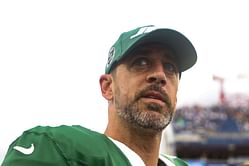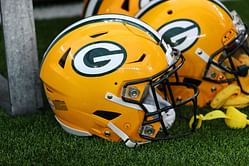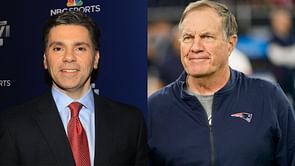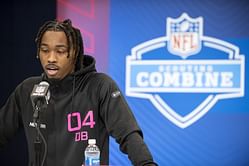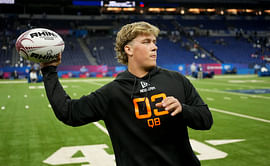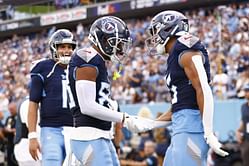The National Football League (NFL) is the premier professional football league in the United States. It was founded in 1920 as the American Professional Football Association (APFA), but changed its name to the NFL two years later.
The NFL initially consisted of teams from the Midwest and Northeast, with the league’s first championship game taking place in 1933. The championship game, known as the NFL Championship, became an annual event, and the winner was crowned the NFL champion.
Throughout the 1940s and 1950s, the NFL grew in popularity, and the league began to expand, with new teams being added and the championship game becoming more widely watched. In 1960, the American Football League (AFL) was established as a rival league to the NFL.
The two leagues competed with each other for players, fans, and television contracts, but in 1966, the two leagues agreed to merge. The merger led to the creation of the Super Bowl, a championship game between the two leagues' champions.
Since the merger, the NFL has continued to grow in popularity, becoming a major part of American culture. The league has expanded to 32 teams, and the Super Bowl has become the most-watched annual sporting event in the United States.
Throughout its history, the NFL has seen many great players and teams, and the league continues to evolve, with new rules and innovations being introduced every year. Today, the NFL is a multi-billion dollar industry and one of the most popular professional sports leagues in the world.

DENVER - SEPTEMBER 16: A close up of the official NFL 'The Duke' game ball complete with commissioner Roger Goodell's signature as the Denver Broncos defeated the Oakland Raiders 23-20 in overtime during week two NFL action at Invesco Field at Mile High on September 16, 2007 in Denver, Colorado. (Photo by Doug Pensinger/Getty Images)
Early Days of NFL
The early days of the NFL were marked by a number of challenges and struggles as the league worked to establish itself as a viable professional football organization.
The league was originally founded as the American Professional Football Association (APFA) in 1920, with 10 teams primarily from the Midwest. The league was made up of largely small-town teams that played in stadiums that were often little more than makeshift fields. The league was also plagued by financial instability and a lack of clear leadership.
Despite these challenges, the NFL began to gain traction in the 1920s. The league’s first championship game was played in 1933, and the game helped to legitimize the league and establish it as a major force in American sports.
Throughout the 1930s and 1940s, the NFL continued to grow, adding new teams and expanding its reach beyond the Midwest. The league also began to experiment with new rules, such as the forward pass, which helped to make the game more exciting and accessible to fans.
One of the biggest challenges facing the league during this time was competition from other professional football leagues, such as the All-American Football Conference (AAFC), which operated from 1946 to 1949. The AAFC had several successful teams and was able to lure away some of the NFL’s top talent.
However, the NFL was ultimately able to outlast the AAFC, and in 1950, the two leagues merged, with three former AAFC teams joining the NFL. This merger helped to solidify the NFL’s position as the premier professional football league in the United States.
Despite its early challenges, the NFL has grown into a massively popular and lucrative league, with millions of fans around the world and an annual Super Bowl game that is watched by hundreds of millions of people. The league’s early struggles and successes helped to shape the NFL into the organization that it is today.
Merger With AFL or American Football League
The NFL and AFL (American Football League) merger took place in 1970, bringing together two major professional American football leagues to create what we now know as the National Football League (NFL).
Prior to the merger, the NFL and AFL were separate organizations with their own teams, schedules, and championships. However, the AFL began to gain popularity and challenge the NFL's dominance, leading to fierce competition between the two leagues for players and fans.
In 1966, the two leagues agreed to a merger plan that would create a combined league with two conferences: the AFC (American Football Conference) and the NFC (National Football Conference). The two conferences would operate separately but would meet in a championship game known as the Super Bowl.
The first Super Bowl was played in 1967 between the NFL's Green Bay Packers and the AFL's Kansas City Chiefs. The Packers won, but the game was considered a success and helped pave the way for the eventual merger.
The merger was finalized in 1970, with the AFL's teams joining the NFL to form a single 26-team league. The new NFL was divided into two conferences, the AFC and the NFC, each with 13 teams. The league's schedule was expanded to 14 games per team, and the Super Bowl became the championship game for the entire NFL.
The merger brought together many of the NFL's and AFL's top teams and players, including the Dallas Cowboys, Pittsburgh Steelers, Oakland Raiders, and Kansas City Chiefs. It also led to greater parity between the two conferences and helped establish the NFL as the dominant professional football league in the United States.
Expansion of the League
The NFL (National Football League) has undergone significant expansion since its founding in 1920. Initially, the league consisted of just ten teams, but it has grown to include 32 franchises today. Here is a brief overview of the NFL's expansion:
1920s-1930s:
The NFL started with ten teams, all located in the northeastern United States. Over the course of the 1920s and 1930s, the league added several more teams, including the Chicago Bears, Green Bay Packers, and New York Giants.
1940s-1950s:
During this period, the NFL continued to expand its geographic reach. It added teams in Los Angeles, San Francisco, and Baltimore, and merged with the All-America Football Conference (AAFC), absorbing three of its teams: the Cleveland Browns, San Francisco 49ers, and Baltimore Colts.
1960s:
The NFL's expansion continued at a rapid pace during the 1960s. The league added six new teams, including the Dallas Cowboys, Minnesota Vikings, and Miami Dolphins. The AFL (American Football League), a competing league, also began to expand during this time.
1970s-1980s:
In 1970, the AFL merged with the NFL, creating two conferences (the AFC and NFC) and a total of 26 teams. The league added six more teams in the 1970s and four more in the 1980s, including the Seattle Seahawks and Tampa Bay Buccaneers.
1990s-2000s:
During this period, the NFL expanded its reach beyond the United States, adding the Canadian Football League (CFL) to its roster of leagues that could send players to the NFL. The league also added two new franchises: the Jacksonville Jaguars and Carolina Panthers.
2010s-present:
The NFL's most recent expansion came in 2002, when the league added the Houston Texans as its 32nd franchise. Since then, there have been no new teams added to the league, but there have been discussions about potentially expanding to 33 or 34 teams in the future. Additionally, the league has continued to expand its global reach, with games played in London, Mexico City, and Canada.
Greatest Moments in the NFL
The NFL (National Football League) has a long and storied history filled with many memorable moments. Here are 10 greatest moments in the NFL:
The Ice Bowl (1967): The Green Bay Packers defeated the Dallas Cowboys in one of the coldest games in NFL history, with a temperature of -13°F (-25°C) and a wind chill of -48°F (-44°C).
The Immaculate Reception (1972): Franco Harris of the Pittsburgh Steelers made an incredible catch and run to score the game-winning touchdown against the Oakland Raiders in the AFC Divisional Playoff game.
The Catch (1982): Joe Montana of the San Francisco 49ers threw a touchdown pass to Dwight Clark to win the NFC Championship game against the Dallas Cowboys.
The Music City Miracle (2000): The Tennessee Titans pulled off a stunning last-second kickoff return touchdown to beat the Buffalo Bills in the AFC Wild Card game.
Super Bowl III (1969): The New York Jets, led by quarterback Joe Namath, upset the heavily favored Baltimore Colts to win their first and only Super Bowl championship.
Super Bowl XLII (2008): The New York Giants defeated the previously undefeated New England Patriots in one of the greatest upsets in NFL history.
The Drive (1987): John Elway of the Denver Broncos led a 98-yard touchdown drive in the fourth quarter of the AFC Championship game against the Cleveland Browns to force overtime, which the Broncos eventually won.
The Tuck Rule Game (2002): The New England Patriots defeated the Oakland Raiders in a controversial game that included a controversial call by the referees that allowed the Patriots to keep possession of the ball and ultimately win the game.
The Hail Mary (1975): Roger Staubach of the Dallas Cowboys threw a desperation pass to Drew Pearson, who caught the ball in the end zone to beat the Minnesota Vikings in the NFC Divisional Playoff game.
The Minneapolis Miracle (2018): The Minnesota Vikings pulled off a stunning last-second touchdown pass to beat the New Orleans Saints in the NFC Divisional Playoff game.
These are just a few of the many great moments in the NFL's history, and they continue to inspire and entertain football fans around the world.
Key Figures in NFL History
The NFL (National Football League) has had many key figures throughout its history who have helped shape the league into what it is today. Here are some of the most notable:
Pete Rozelle: Rozelle served as NFL commissioner from 1960 to 1989 and oversaw the league's growth from a regional sport to a national phenomenon. He was instrumental in negotiating the league's first television contracts and helped establish the Super Bowl as one of the biggest sporting events in the world.
Vince Lombardi: Lombardi was head coach of the Green Bay Packers from 1959 to 1967 and led the team to five NFL championships, including the first two Super Bowls. He is widely regarded as one of the greatest coaches in NFL history.
Bill Belichick: Belichick is currently head coach of the New England Patriots and has led the team to six Super Bowl championships, making him one of the most successful coaches in NFL history.
Walter Payton: Payton was a running back for the Chicago Bears from 1975 to 1987 and is widely regarded as one of the greatest players in NFL history. He held several records at the time of his retirement, including most career rushing yards and most career touchdowns.
Joe Montana: Montana played quarterback for the San Francisco 49ers and Kansas City Chiefs from 1979 to 1994 and is widely regarded as one of the greatest quarterbacks in NFL history. He led the 49ers to four Super Bowl championships and was named Super Bowl MVP three times.
Roger Goodell: Goodell is the current commissioner of the NFL and has held the position since 2006. He has overseen several major initiatives during his tenure, including player safety initiatives and the expansion of the league's international presence.
Tom Brady: Brady is a quarterback who has played for the New England Patriots and Tampa Bay Buccaneers and is widely regarded as one of the greatest players in NFL history. He has won seven Super Bowl championships, more than any other player in NFL history.

